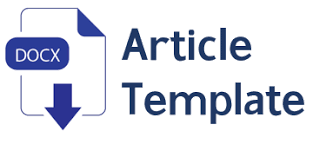Needs Assessment of Mental Health Promotion among Teachers to Support Healthy Schools: A Study at Junior High Schools In Yogyakarta City, Indonesia
A Study at Junior High Schools In Yogyakarta City, Indonesia
Downloads
Background: Teachers' mental health is a crucial factor in creating a healthy and conducive school environment for learning. However, the workload and psychosocial stress experienced by teachers can interfere with their mental health conditions, so appropriate interventions through mental health promotion are needed. This study aims to conduct a needs assessment for mental health promotion among teachers in junior high schools in Yogyakarta City as an effort to support the healthy school program. Methods: This study applied a Cross-sectional research design and Chi-Square analysis, and Fisher's Exact test. A total of 42 people were sampled in this study, using the total sampling technique. The instruments used included personal data sheets, as well as questionnaires to assess the level of work stress and mental workload. Results: The results showed that most of the respondents were female, as many as 26 people (61.9%), with age >34 years, as many as 23 people (54.8%), and tenure >5 years, as many as 25 people (59.5%). There were 18 teachers (42.9%) who experienced work stress, and most of the teachers stated that the workload was experienced at a moderate level, namely 38 people (90.5%). There is a relationship between mental workload and work stress in teachers with a p-value of 0.027 (p<0.05). Conclusion: The higher the mental workload, the more likely teachers are to experience job stress. These findings are important for improving teacher welfare, which in turn will support the creation of a positive and quality learning climate in schools. This study contributes to the development of sustainable mental health programs for teachers as an integral part of efforts to create healthy schools in Indonesia
Agyapong, B. et al. (2022) ‘Stress, Burnout, Anxiety and Depression among Teachers: A Scoping Review’, International Journal of Environmental Research and Public Health, 19(17). Available at: https://doi.org/10.3390/ijerph191710706.
Akbar, H. et al. (2024) ‘The Relationship of Age, Working Period and Work Demands with Work Stress in PDAM Employees in Regency X', Journal of Public Health, 14(1), pp. 1–6.
Ani, N. et al. (2020) ‘The Relationship Between Workload and Work Stress of K3 Lecturers in Central Java DIY’, Journal of Public Health Sciences Periodical, 5(1), pp. 58–63.
Aprilia, V. et al. (2023) ‘The Relationship between Mental Workload and Non-Physical Work Environment with Work Stress in Sanan MSMEs', Medika Nusantara Journal, 1(4), pp. 103–118. Available at: https://doi.org/10.59680/medika.v1i4.611.
Aziz, R. et al. (2023) ‘Reconstructing the meaning of work to promote teachers’ mental health’, Health Education and Health Promotion, 11(2), pp. 1001–1008.
Azizah, Nurul Idris, Prihatin, Fairus Asrina, A. (2023) ‘The Relationship between Age and Work Stress in Newmakassar Mall, Makassar Mall, Traders', Window of Public Health Journal, 4(2), pp. 208–216.
Chrisnatalia, D. (2023) The Role and Inhibitions of Teachers in Supporting Students' Mental Health in Schools. Available at: https://buletin.k-pin.org/index.php/arsip-artikel/1423-peran-dan-penghambat-guru-dalam-mendukung-kesehatan-mental-siswa-di-sekolah (Accessed: 28 April 2025).
Deady, M. et al. (2024) ‘A mentally healthy framework to guide employers and policy makers’, Frontiers in Public Health, 12(July), pp. 1–15. Available at: https://doi.org/10.3389/fpubh.2024.1430540.
Ekayani, N.W.D., Primatanti, P.A. and Ningrum, R.K. (2024) ‘Teacher Training to Improve Adolescent Mental Health at State Junior High School 2 Amlapura', 3(2), pp. 97–102.
Hapsari, K.V., Lestantyo, D. and Ekawati (2023) ‘The Relationship between Mental Workload, Age, and Working Period with Work Stress in Surakarta Customs Office Employees', JKM: Journal of Public Health, 11(4), pp. 385–398.
Hermawan, E. (2022) ‘Analysis of the Influence of Workload, Work-Family Conflict and Work Stress on the Performance of PT. Sakti Mobile Jakarta', Journal of Applied Management Sciences, 3(4), pp. 372–380.
Jusuf, Z. and Martha, E. (2025) ‘The Role of Workplace Health Promotion Programs for Worker Health: A Systematic Literature Review, Manuju: Malahayati Nursing Journal, 7(1), pp. 49–64.
Marianty, D. et al. (2025) ‘The Role of Teachers and School Efforts in Addressing Students' Mental Health in Indonesia: A Review of the Systematic Literature', 3(1), pp. 49–63.
Mayasari, E.D., Evanjeli, L.A., Erlita, B., et al. (2022) 'Mental Health of Elementary School Teachers During Online Teaching', Journal of Psychological Science and Profession, 6(1), pp. 33–41. Available at: https://doi.org/10.24198/JPSP.V6I1.36932.
Muttaqin, D., & Ripa, S. (2021). Psychometric properties of the Indonesian version of the Depression Anxiety Stress Scale: Factor structure, reliability, gender, and age measurement invariance. Psikohumaniora, 6(1), 61–76. https://doi.org/10.21580/pjpp.v6i1.7815
Nuriani, R.I. (2023) The Role of School Institutions in Efforts to Control Teachers' Mental Health in the Social Media Era. Available at: https://guruinovatif.id/artikel/peran-lembaga-sekolah-dalam-upaya-pengendalian-kesehatan-mental-guru-di-era-media-sosial (Accessed: 28 April 2025).
Permatahati, F., Ihdalumam, A. and Suhadianto (2023) ‘Mental Health Promotion as an Effort to Realize Adolescents Towards a Positive Personality: Literature Review, National Seminar on Psychology, (November), pp. 207–222.
Pramono, B. and Paramananda, A. (2024) 'Factors Related to Work Stress in Nurses in the Psychiatric Inpatient Room of RSKD Duren Sawit, East Jakarta City in 2024', BULLET : Multidisciplinary Journal, 3(05), pp. 815–829.
Puteri, A.N. and Suryanto, S. (2023) 'Mental Health of Elementary School Teachers Post-Pandemic', GUIDENA: Journal of Education, Psychology, Guidance and Counseling, 13(1), p. 12. Available at: https://doi.org/10.24127/gdn.v13i1.6383.
Putri, H.A.Y., Sukyati, I. and Febriyanti, Putri, A. (2021) 'Analysis of Factors Affecting Work Stress in Employees at PT XACTI Indonesia in 2021', Health Bulletin: Scientific Publications in the Health Sector, 5(2), pp. 101–110. Available at: https://doi.org/10.36971/keperawatan.v5i2.93.
Refiany, P. (2019). The Relationship Between Workload and Work Stress in Teachers of SMA Negeri 1 Pekanbaru. 25–32. https://repository.uin-suska.ac.id/24427/
Riznanda, W.M. and Kusumadewi, D. (2023) ‘The Relationship between Workload and Work Stress in Production Division Employees', Character: Journal of Psychological Research, 10(03), pp. 792–804.
Roni et al. (2024) ‘Differences in Academic Stress Levels Based on Gender in Final Year Students of the Social Studies Education Study Program at FKIP UNTAN', Scientific journal of Educational Vehicles, 10(10), pp. 761–770.
Rosanna, S.F., Hartanti, R.I. and Indrayani, R. (2021) ‘The Relationship Between Individual Factors and Burnout and Work Stress in Elementary School Teachers Equivalent', Ikesma, 17(2), p. 111. Available at: https://doi.org/10.19184/ikesma.v17i2.24783.
Saleh, N., Sulaeman, U. and Gafur, A. (2024) ‘Factors Related to Work Stress in Madrasah Aliyah Negeri Pinrang' Teachers, Window of Public Health Journal, 5(2), pp. 215–223. Available at: https://doi.org/10.33096/woph.v5i2.1276.
Tarigan, S. (2021) The Relationship between Workload and Work Stress in PT Hilon North Sumatra Workers in 2021. State Islamic University of North Sumatra.
WHO (2022) WHO Guidelines on Mental Health at Work. Jenewa.
WHO (2024) Mental Health at Work. Available at: https://www.who.int/news-room/fact-sheets/detail/mental-health-at-work.
Yustikasari, Anisa, R. and Dewi, R. (2022) ‘Utilization of Health Promotion Implementation Program: Promotion of Mental Health in Adolescents', Joong-ki : Journal of Community Service, 1(3), pp. 430–438. Available at: https://doi.org/10.56799/joongki.v1i3.860.
Zenivansari, B.G. and Dewanti, R. (2024) 'Overview of Work Stress in Kindergarten and PAUD Teachers at the Raudhatul Athfal Teachers Association (IGRA) Kec. Porong Kab. Sidoarjo’, JIIP - Scientific Journal of Educational Sciences, 7(5), pp. 4513–4523. Available at: https://doi.org/10.54371/jiip.v7i5.4322

This work is licensed under a Creative Commons Attribution-NonCommercial-ShareAlike 4.0 International License.

In order to be accepted and published by Jurnal Promkes: The Indonesian Journal of Health Promotion and Health Education, Author(s) who submit an article should complete all the review process. The copyright of received articles assigned to the Jurnal Promkes: The Indonesian Journal of Health Promotion and Health Education,and Department of Health Promotion and Behavior Science, Universitas Airlangga as publishers of the journal. The intended copyright includes the rights to publish articles in various forms (including reprints).
Jurnal Promkes: The Indonesian Journal of Health Promotion and Health Education's website. Authors are allowed to use their works for any purposes deemed necessary without written permission from Jurnal Promkes: The Indonesian Journal of Health Promotion and Health EducationS and/or Department of Health Promotion and Behavior Science, Universitas Airlangga with an acknowledgement of initial publication in this journal.
The Editorial Team of Jurnal Promkes: The Indonesian Journal of Health Promotion and Health Education and Department of Health Promotion and Behavior Sciences strive to ensure that no errors occur in the articles that have been published, both data errors and statements in the article.
Users of this website will be licensed to use materials from this website following the Creative Commons Attribution-NonCommercial-ShareAlike 4.0 International License. No fees charged. Please use the materials accordingly.
------------------------------------------------------------------------------------------------------------------------------------------------------------------------------------------
Attribution ” You must give appropriate credit, provide a link to the license, and indicate if changes were made. You may do so in any reasonable manner, but not in any way that suggests the licensor endorses you or your use.
NonCommercial ” You may not use the material for commercial purposes.
ShareAlike ” If you remix, transform, or build upon the material, you must distribute your contributions under the same license as the original.


























